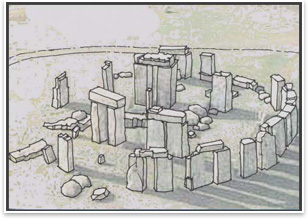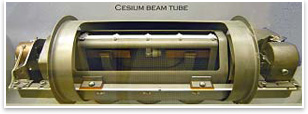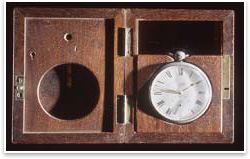
The Neuroscience and Architecture of Time Summary: This is a good time to talk about time. It is the beginning of a new era in the history of AIArchitect, it’s time to begin another school year, it’s about time for you to come home mentally from your vacation, and it’s time to stop and reflect on what neuroscience can tell us about how and why the brain responds to time. Time, of course, is crucial to planning, designing, and creating the built environment. It is so much a part of our lives from our first memories on that we implicitly think of time as a thing. It is not. It is a concept that we have used our conceptual brains to define and measure. It is also a part of our hard-wired brains, and we find manifestations of that biological clock in organisms as simple as the fruit fly. Join John Eberhard, FAIA, as he explains time as a function of neuroscience. Below is a synopsis of the article. For the full text, click on the PDF link located in the column on the right.
To measure the time between remembered events, we have agreed on physically measurable intervals: hours, minutes, and seconds, for instance. Knowing anything about time depends on the neurons—the 10 billion cells—of the brain. More precisely what the brain “knows” about the meaning of time depends on the specific arrangement of the networks of connections between neurons and the way that neurotransmitters are released and absorbed to communicate between networks. The mechanical clocks: A clock is a machine in which a device that performs regular movements in equal intervals of time is linked to a counting mechanism that records the number of movements. All man-made clocks, of whatever form, are made on this principle. The first domestic clocks were smaller versions of large public clocks. They appeared late in the 14th century, and few examples have survived.
The biological clock: You probably go to bed and get up about the same time every day. For most people, the “clock” inside their heads tells them it’s time to get up; if they stay up “past bedtime,” they get sleepy. Neuroscientists now know that this happens because we have a “clock gene,” inherited from previous generations, that sets a tiny region of our brains called the suprachiasmatic nucleus (SCN) used to produce a chain of chemical and nervous instructions that ripple through the body, controlling how each organ and tissue functions over the 24-hour day.
It is likely, although not yet proven, that much
the same thing happens in our brains, even though we have brains
that are 100 thousand times as complex. We have 10 billion neurons
in our brains and the Drosophila has only 100 thousand. What is much
less known is how environment—including the built environment—interacts
with biological clocks. That is just one more area where the neuroscience
of architecture will need more research in the future. |
||
Copyright 2006 The American Institute of Architects. All rights reserved. Home Page |
||
news headlines
practice
business
design
recent related
› Health-care Facilities and Neuroscience Knowledge
› Children’s Brains Are the Key to Well-designed Schoolrooms
› “The Mystery and Imagination of the Minds of Children”
A
full-text version of “The Neuroscience and Architecture of Time” is available.
Download the print-friendly
PDF file (236 Kb).

 Time is a product of the human mind.
Time is a product of the human mind. By the middle of the 20th century, when man began to travel into
space, more and more accurate clocks were needed. The National Bureau
of Standards in Washington built a “clock” based on the
oscillation of a cesium atom—the most reliable counter in the
universe. Its definition of a second is “the duration of 9,192,631,770
periods of the radiation corresponding to the transition between
the two hyperfine levels of the ground state of the cesium 133 atom.” This
works for setting the
By the middle of the 20th century, when man began to travel into
space, more and more accurate clocks were needed. The National Bureau
of Standards in Washington built a “clock” based on the
oscillation of a cesium atom—the most reliable counter in the
universe. Its definition of a second is “the duration of 9,192,631,770
periods of the radiation corresponding to the transition between
the two hyperfine levels of the ground state of the cesium 133 atom.” This
works for setting the  Time “flies”:
Time “flies”: